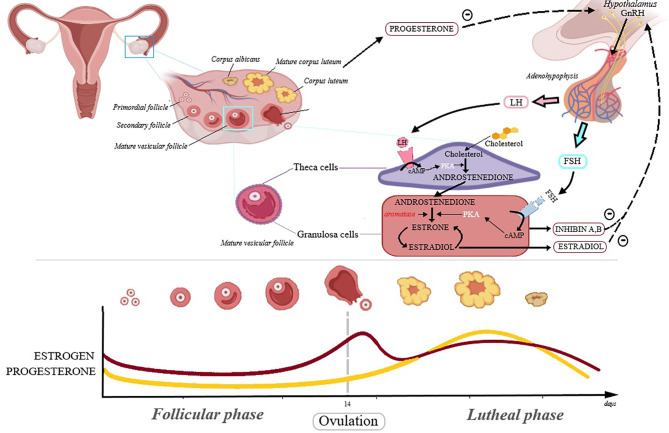Figure 1.
The hormonal interaction at ovary level. In the first phase of the menstrual cycle, called follicular phase, the follicle-stimulating hormone (FSH) concentration is increasing as follicles maturate, reaching a maximum during ovulation. FSH binds to the FSH receptor in the granulosa cells influencing androstenedione conversion to estradiol. The luteinizing hormone (LH) triggers ovulation and its levels are maximum during this phase. LH binds to the LH receptors from theca cells and promotes conversion of cholesterol into androstenedione. Inhibin A and B are members of transforming growth factor beta (TGFB) family and regulate FSH activity. The corpus luteum is formed after ovulation and secrets progesterone. During most of the menstrual cycle, the neuroendocrine output (from hypothalamus and adenohypophysis) is modulated by negative feed-back from progesterone and estrogen.

